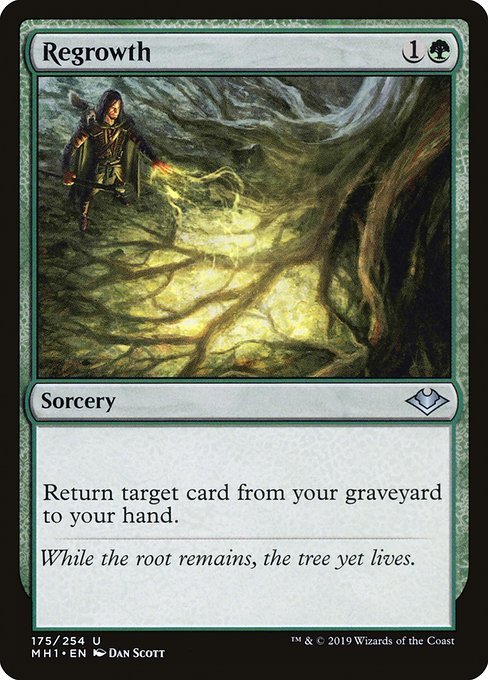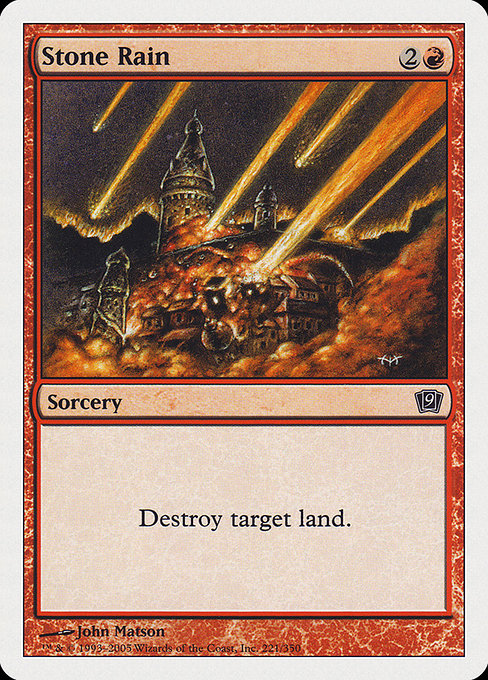Loading...
Products
Magic: The Gathering Line
Products
Magic: The Gathering Line

I love competitive Magic a lot, but I have to admit that there are so many fascinating casual variants like Pack Wars or Dandan that it's hard not to try and, eventually, not to enjoy them. They're great as stand-alone 'formats', but also as something to do between matches during a tournament.
Today, I want to talk about my personal favourite - The Basic Land Game. I found an obscure Reddit thread from a couple of years ago describing its rules. Since then, I've put hours and hours into it, refining the rules to the point where I find the game most enjoyable but also most interesting gameplay-wise.
At the end, I'll plug a link to me explaining the rules on video but also showcasing a sample game! If you want to try out the absolute cheapest way to enjoy Magic, read on!
The main idea behind the format is to play with basic lands only! It makes it trivial to assemble a deck in the moment, as you can very easily grab some lands from the draft land station, and start enjoying splendid gameplay. If you decide that you want to take it a tad more seriously, you can pre-prepare your own 'decks' with the basic lands of your choice. I personally love my Beta Basic deck that, due to the cards used, are properly double sleeved in Katanas.
Let's actually get into the rules of how to play this format!
It wouldn't be much fun if we just played lands every turn and nothing happened, would it? Every basic has a very special effect that influences the game. Let's go through them one by one.
Basic Forest acts as Regrowth. When you play Forest, choose a land in the graveyard to put back into your hand.
Basic Swamp acts as Thoughtseize. When you play Swamp, you look at the opponent's hand and discard any land.
Basic Mountain acts as Stone Rain. When you play Mountain, you target a land in play that the opponent has and destroy it.
Basic Island has two uses actually!
If you have Island in hand, you can discard it alongside another land to counter an opposing land drop (and its effect). If you play Island, you draw a card.
There are already some interesting rules questions arising!
Do I know what my opponent wants to Mountain destroy before I counter?
Yes!
Do I know what my opponent wants to Forest Regrowth from the graveyard before I counter?
Yes!
Do I know what my opponent wants to Thoughtseize from my hand before I counter?
No!
It comes down to how normal Magic works. If you put Stone Rain or Regrowth on the stack, the opponent would know the targets immediately. If you put Thoughtseize, they wouldn't, as discarding is a part of the resolution.
In the past, I played Island as "Scry 2" but it ultimately proved to be too weak and heavily discouraged ever deploying Island to the board.
Basic Plains acts as Ephemerate. When you play Plain, you target one of your other non-Plains lands and re-use their effect.
The idea for Plains to blink was great, and both made games more interesting and gave white a proper colour identity compared to the previous Opt effect.
In relation to Island, the opponent will know which land you want to re-use but won't know what you'll do with it. E.g. if you target Forest, that is known. What's not known is what you're going to Regrowth.
To answer a popular doubt - for the sake of clear gameplay, you cannot force a draw by blinking two Plains continuously.
While it might seem like you just play cards left to right, it couldn't be further from the truth. We know that contributing to the board is paramount, as it will result in a win. We already can notice key differences between cards - Mountain affects the board directly while Swamp doesn't.
It's also worth noting that every land generates some kind of advantage when it enters play - Swamp and Mountain take away an opp's resource while Forest and Island generate one for you.
Therefore, Mountain is actually worst resource-wise, as you use a land to destroy a land ... that has generated some kind of value. But it's the best tempo-wise, as it very directly adds a type for you and deprives the opponent of one.
Even though it's a simple game that can be played with anyone, even a non-Magic person, it embodies classic game theory concepts that manifest throughout.
Another example of the non-linearity of the format is how different openers and strategies ought to play out. Going for Domain is going to be much different from a Mono win. It's unlikely to pull off Islands or Plains, but if you match up against someone who plays Mountains aggressively, Forests is a powerful counter, especially in conjunction with Islands as Force of Will. You can reliably run someone out of cards and play a long game.
Moreover, interaction like Mountain and Thoughtseize will shape the game in a certain way. With Mountain, you should consider destroying the land that your opponent won't have a lot of value from playing. If you destroy their Plains with 3 other types on the board, they will happily play another one and get a swathe of options. But if you're empty-handed and destroy their Swamp, they're forced to playing a blank if they want to progress their plan.
I'd also like to draw your attention to the fact that you need to achieve one of the two conditions to win at any point. For instance, if you have 3 Island, 3 Mountain, 3 Swamp, and 4 Forest in play, you're both one Plains or one Forest away from winning. In very long games, you can set up such double-ended wins so the opponent has harder time stopping you.
Last but not least, being on the play or draw does matter! When on the play, you can try to trade your resources aggressively for tempo with the use of Mountains and Island-counters. However, the opponent would also happily Island-counter as they are the ones with more cards total. Then it comes down to individual playstyles whether both participants such fire off all the Islands and the game becomes a top-deck fiesta or play more strategically and sand-bag the counters.
It is very hard to convey the awesomeness of the format in a written form, but once you've played two or three games, you'll see how the complexity unfolds.
You can also catch me at almost all the big live Magic events at which I am more than happy to battle in Basic Land Game! A lot of creators have also adopted the game and jam it at events!
If you'd like to watch me explain a past variant of the game with video and audio with a sample game, check out the tutorial on UG's Instagram here.












